

  |
Install the software on a computer on which SQL Server resides, and satisfies the minimum requirements specified in the System Requirements.
Installation |
Before You Begin |
||
|
Download the latest software package to perform the install. Make sure that the computer in which you wish to install the software satisfies the System Requirements. |
| 1. | Log on to the client computer as Administrator or as a member of the Administrator group on that computer. | |||
| 2. | Run Setup.exe from the Software Installation
Package.
|
|||
| 3. |
Select the required language. Click Next. |
 |
||
| 4. |
Select the option to install software on this computer.
|
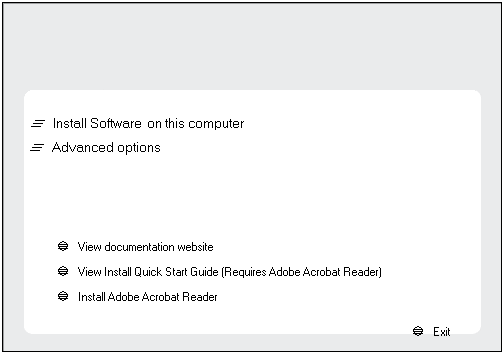 |
||
| 5. |
Select I accept the terms in the license agreement. Click Next. |
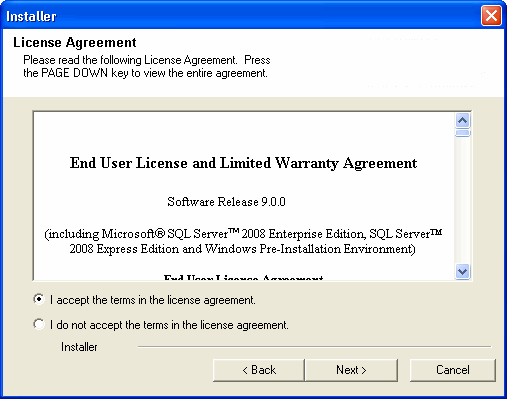 |
||
| 6. | Expand Client Modules | Backup & Recovery
|
Database and then
click SQL
Server iDataAgent box. Click Next. |
 |
||
| 7. |
If this computer and the CommServe is separated by a firewall, select the Configure
firewall services option and then click Next.
For firewall options and configuration instructions, see Firewall Configuration and continue with the installation. If firewall configuration is not required, click Next. |
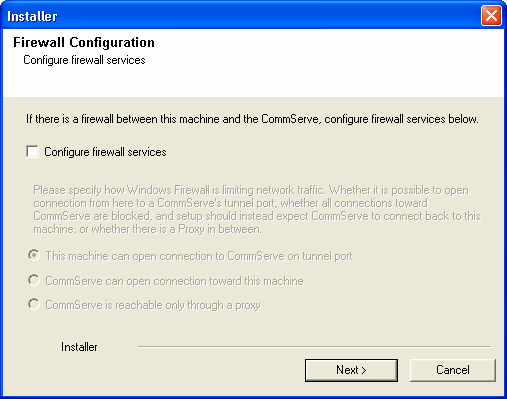 |
||
| 8. |
Enter the fully qualified domain name of the CommServe
Host Name. Click Next.
|
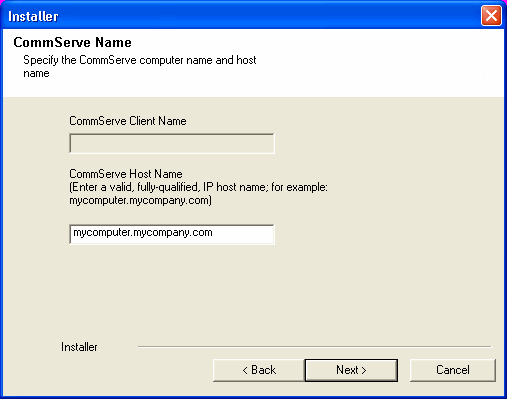 |
||
| 9. | Click Next. |
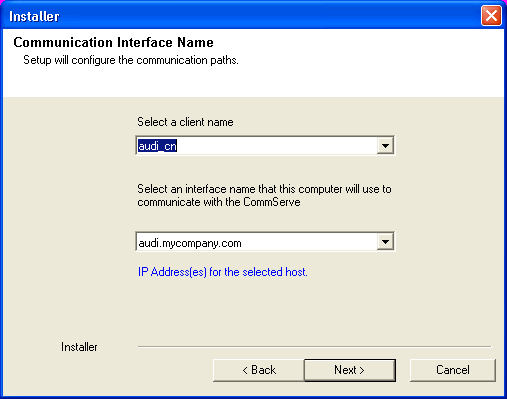 |
||
| 10. |
Select Add programs to the Windows Firewall Exclusion
List, to add CommCell programs and services to the Windows Firewall
Exclusion List. Click Next.
|
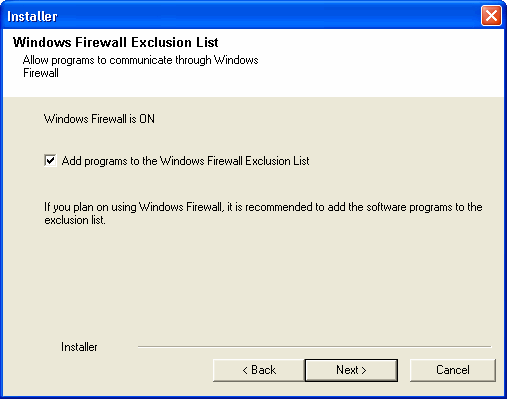 |
||
| 11. |
Verify the default location for software installation. Click Browse to change the default location. Click Next.
|
 |
||
| 12. |
Select a Client Group from the list. Click Next.
|
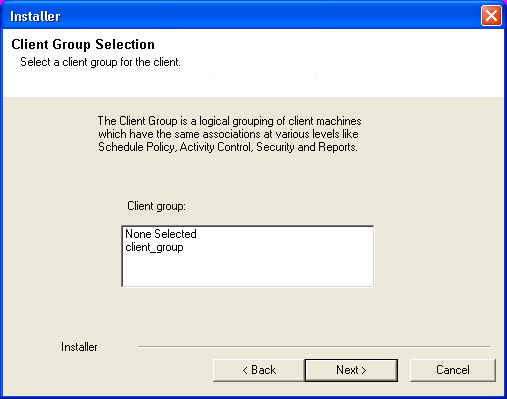 |
||
| 13. | Click Next. |
 |
||
| 14. | Click Next. |
 |
||
| 15. | Select a storage policy from the Storage Policy list. Click Next. |
 |
||
| If you do not have Storage Policy created, this message
will be displayed. Click OK.
|
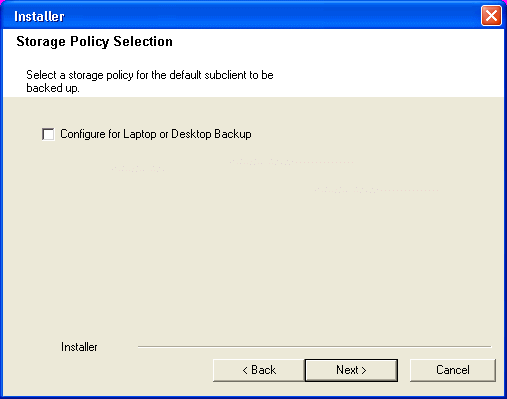 |
|||
| 16. | Click Next.
|
 |
||
| 17. | Click Next. |
 |
||
| 18. | Click Next. |
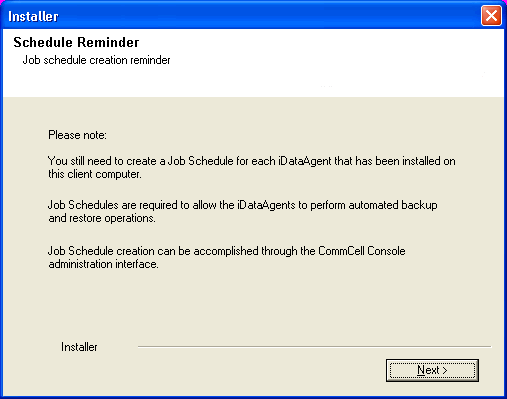 |
||
| 19. | Click Finish. |
 |
||
 |
If you already have a storage policy selected in
step 15, Click
If you do not have Storage Policy created, continue with the following step. |
|||
| 20 | To create a storage policy, you must have configured a
library in the CommCell.
|
|||
DISK LIBRARY CREATION:
This will create a library and Storage Policy. Click the
|
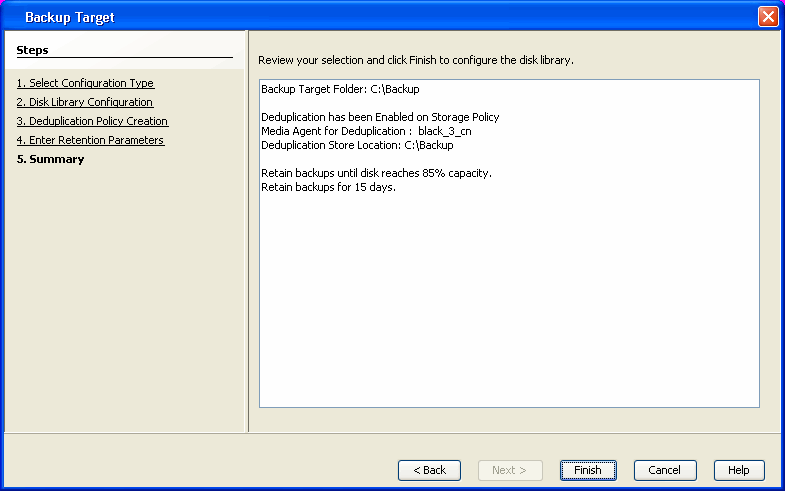 |
|||
Storage Policy Creation
This will create a storage policy. Click the
|
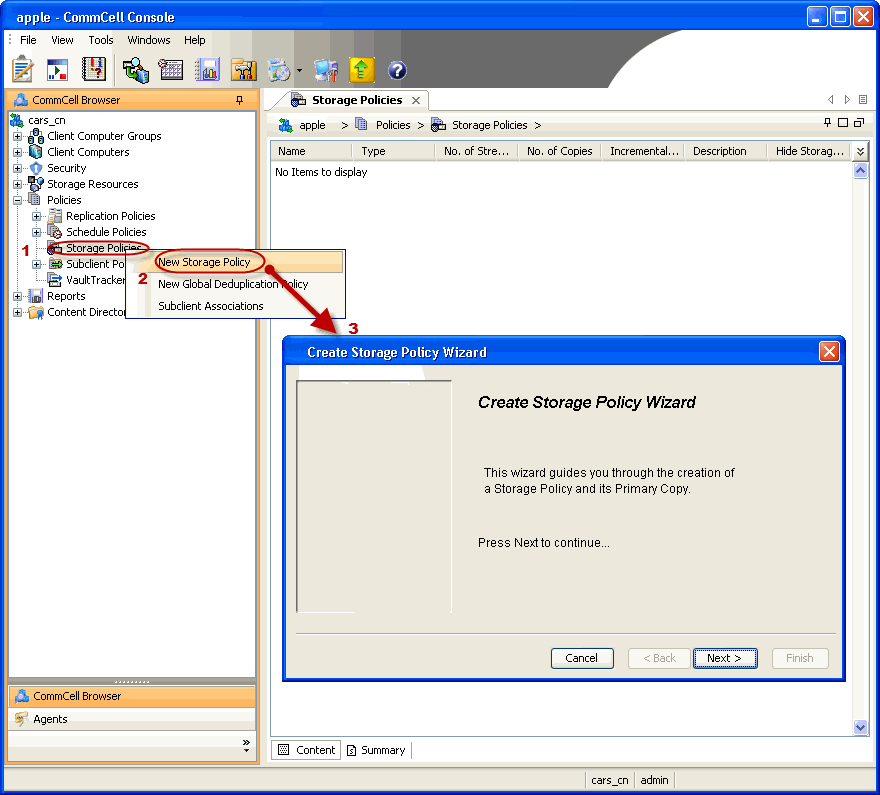 |
  |
Additional Installation Methods |
|
Create a compact software package for quick deployment to multiple clients. Install the software first and later register the client in the CommCell. Deploy the software from CommCell Console on multiple clients. Installing Restore only Agents Setup a client in the CommCell for restore purposes. Deploy the software silently on multiple clients. |